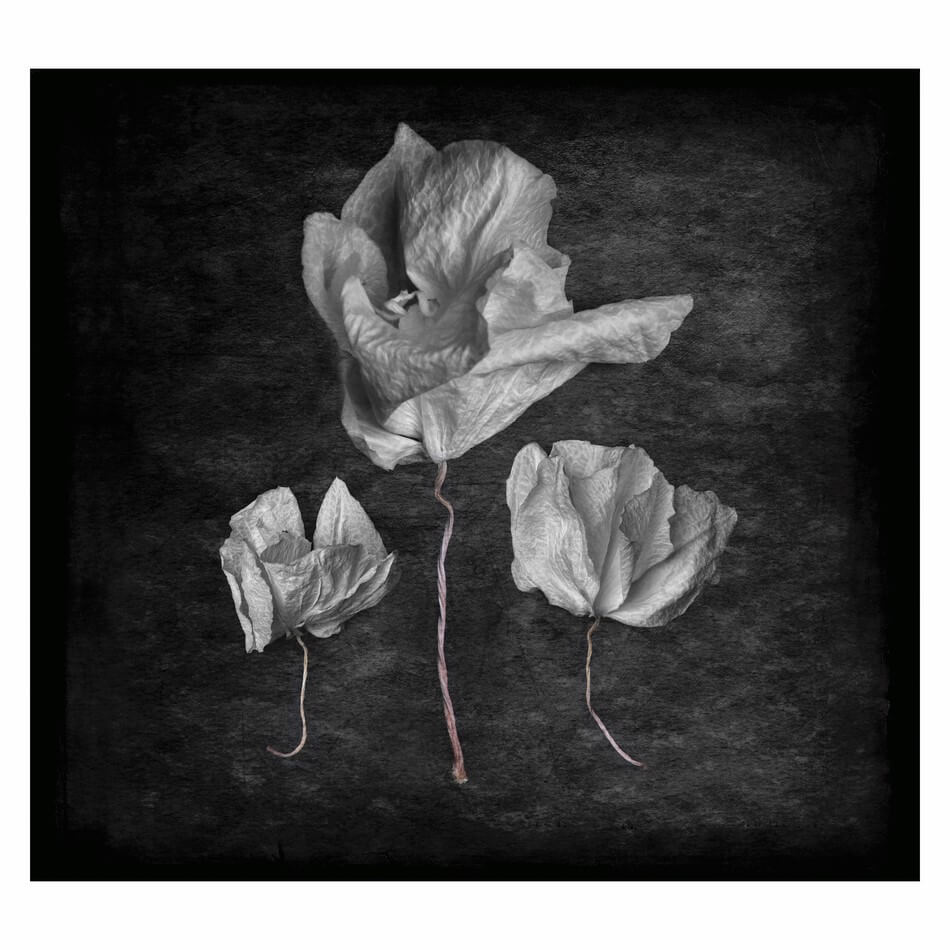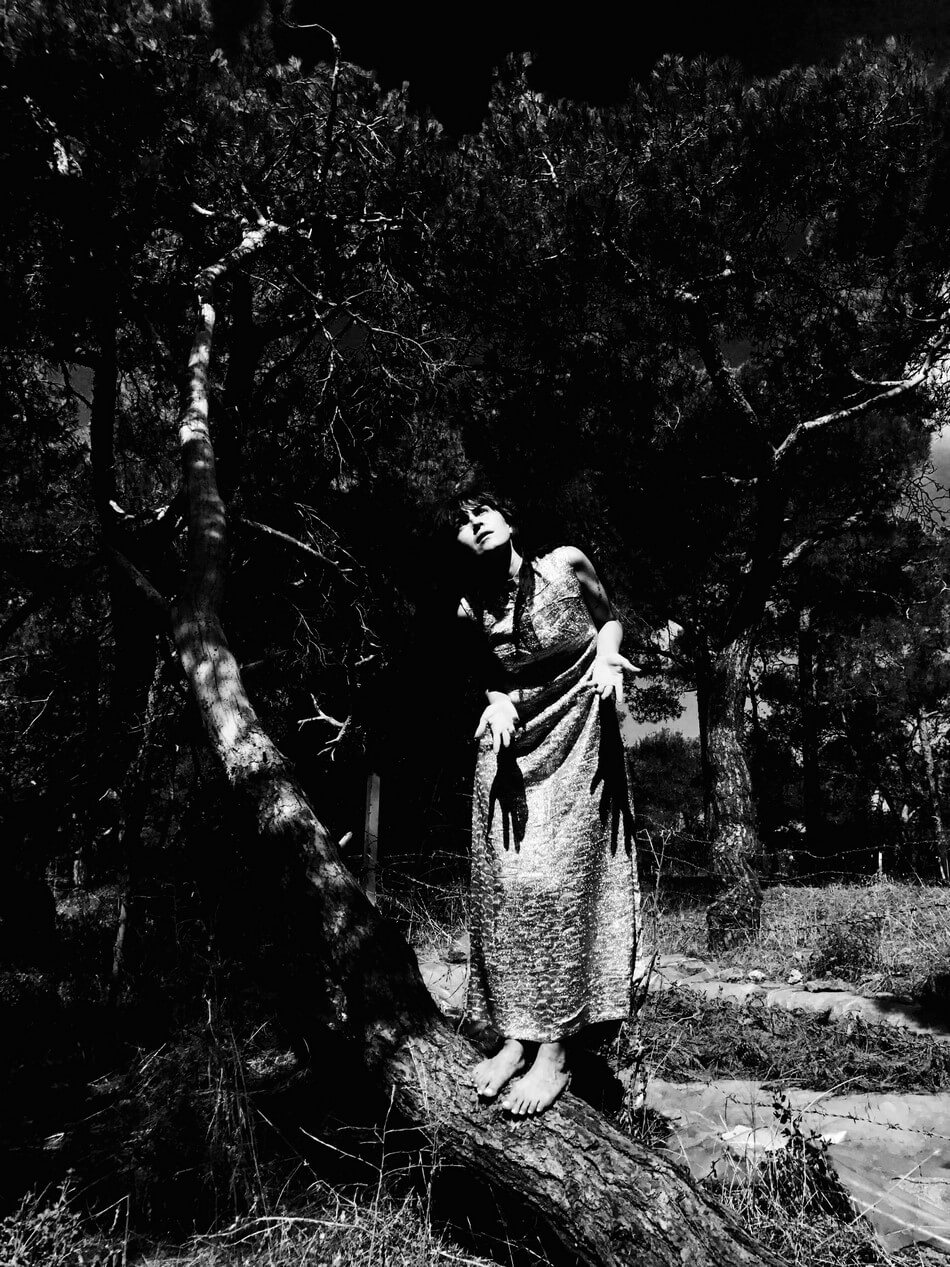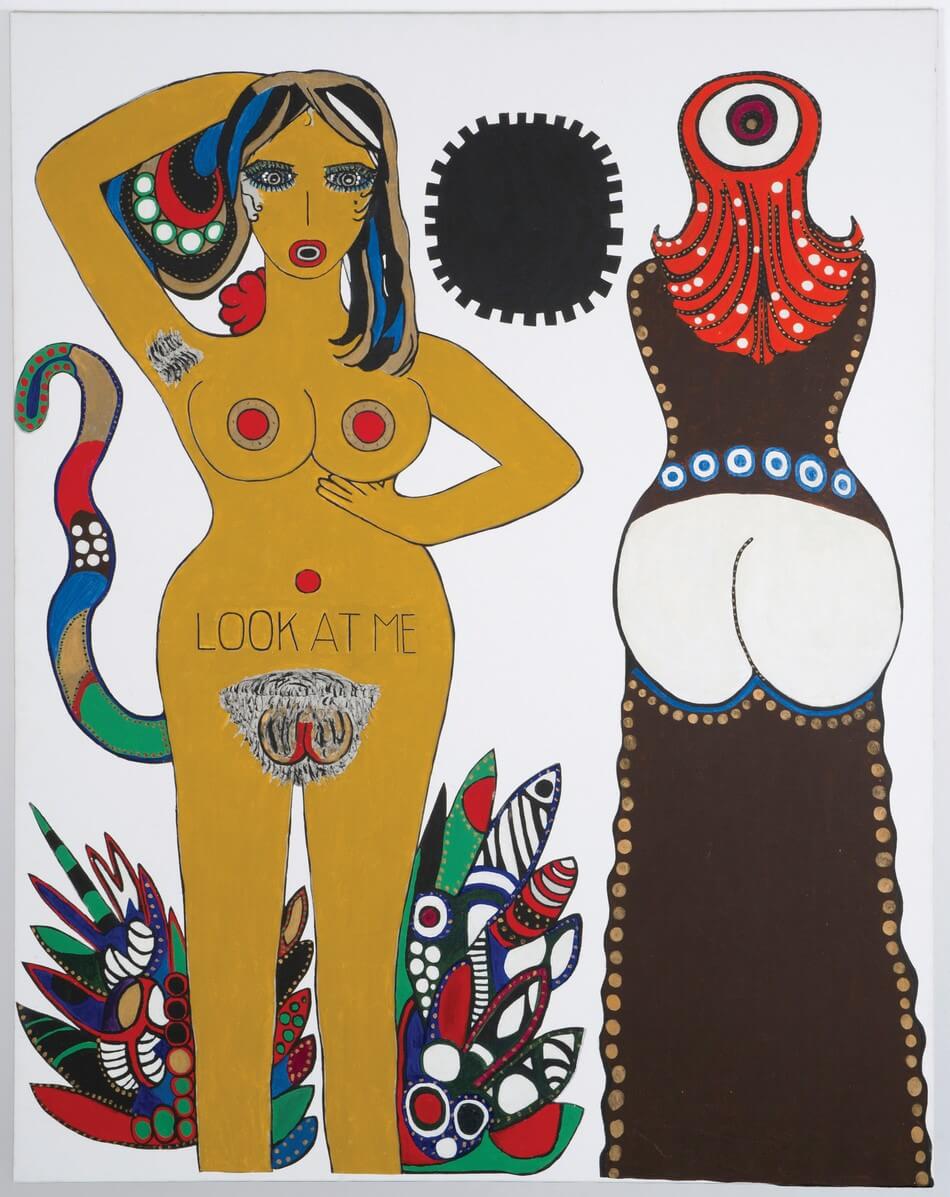‘All is Fair in Art and War’
Vamp explores the curious world of art fairs. Synonymous with greed as much as with beauty...
Words by Emma Calascione
…some are going against the grain… returning to an appreciation of artworks beyond their commercial value.

The adaptation of this age-old saying (‘All is fair in love and war’), by prolific street artist Ben Eine, raises an interesting question about the ethical and aesthetic pitfalls of the art market. Walking past storefront shutters along London’s Middlesex Street, one can view Eine’s letter murals for free. Yet his paintings now sell for between £10,000 and £20,000. The art world has become increasingly financial. Attend any of the major art fairs and you are sure to rub shoulders with the hedge fund buyers who are transforming art into commodity. It’s a feeding frenzy where the hungriest and wealthiest win. Most fairs are not as egalitarian as they seem, often beginning with complimentary VIP previews before the civilians can even get in after dutifully purchasing their ticket. Curators are often a step ahead of the collectors, by the time fairs like the Frieze are open to the public, most of the good stuff will have been sold. It is a fast-paced strategic game for the galleries and artists too. One critic commented that galleries exist purely to get into the art fairs, rather than the fairs existing to host the galleries. Small galleries feel pressured to exhibit but their price points often don’t match up to the high entrance fees, so it can be a burden. Famed artists overproduce to create works for an excessive quantity of fairs, and other emerging artists are barely considered.
The unfairness of the art fair has come under scrutiny over the past few decades. The humble beginnings of fairs like Art Basel in the 1970s are a far cry from the huge proliferation of fairs that fill every art collector’s calendar. Art critics are notorious slaters of the fair format, as it makes them redundant. With no intention to buy art, they have no place there. With art that has no need for the validation of a review, some canny critics have had the foresight to latch themselves on as advisors to the rich, whilst the others continue to hold on to their inherent condemnation. There is a war going on within the art market, between the big bidders and the prejudiced curators, the disgruntled critics and the greedy dealers.

Nothing is fair in love or war, or for that matter, art. Yet the problem is not the art fair itself, but rather the way its context of schmoozers and commodity fetishism have conditioned us to see its offerings. But if you, like me, are simply a person interested in discovering art and making human contact with artists and dealers (which is what fairs should be about) then you need only concern yourself with focusing on perfecting our own individual act of looking, one of the most primitive forms of human intellection. We must remind ourselves that the art fair’s platform is based in this basic human impulse which we must train and nurture, even amid the art fair throngs. One of the main problems with huge fairs is that one can’t seem to spend more than seven seconds with a piece of art; either shoved to the side by the next eager viewer or feeling the pressure to ‘see everything’ and somehow truly seeing nothing. This is a problem that we can tackle individually. We need to take the time to explore not what to look at but how. We cannot always blame the art fair: a dismissal of all art fairs is wholly unfair. Many are great. Many provide an opportunity to have an unbiased, first-hand experience before one’s views are unknowingly moulded by the pen of the art critic, who can make or break an artist, as well as add a couple of zero’s to their price tags. Fairs allow the art enthusiast the opportunity to enjoy art outside the sacred temple gallery context. Art fairs also act as an important space in which an object, sitting amongst other objects, can beget a value. Artists must get paid, and pieces must sell. And there will always be room for fairs that that do not seek only financial profit but actually have an ideal that they defend, no matter how difficult it may be to establish them. Whether it is to promote young artists, showcase world art, or represent some other marginal group, new formats are emerging all over the world, be they pop-up fairs, collaborative exhibitions, satellite fairs or artist run initiatives. The hashtag #notbasel has gained popularity after an eponymous satellite show in Miami Beach emerged in an attempt to tackle the elitist stereotypes typically associated with Art Basel and Miami Art Week. Its mission statement claims it to be “the antagonist to the standard fair and in turn, fills the voids left by Miami Art Week’s soullessness through collaboration, direct engagement and fun”.
Here are some others that challenge the notions of a typical art fair:
.01
The Other Art Fair,
presented by Saatchi Art (22nd-25th March, Victoria House – London) has been called “the perfect opportunity to see up and coming talent in a relaxed setting” (Red Magazine) as well as having “hipster credentials but […] serious about nurturing talent too” (Telegraph Luxury). By cutting out the middle man, this fair creates a unique visitor experience where one can meet and buy direct from the very best emerging and undiscovered artists. The Other Art Fair inspires and delights with a tightly curated and distinctive programme of immersive fair features that create a platform for the ‘unexpected’ at each fair. This year 120 talented artists, handpicked by a committee of art industry experts, will showcase their finest work. Look out for May Parlar’s conversational pieces, the hauntingly beautiful botanical photographs of Maura Jamieson, and Janet Milner’s monographs – a humorous celebration of ordinariness.

Colour 1, Acrylic on linen, 160x105cm

paper, 29cm x 29cm


watercolour monotype, 50×60

Edition 1 of 8), 2018, photograph
.02
SUPERMARKET
Next up on our alternative art fair calendar is a short hop from Amsterdam to Stockholm’s SUPERMARKET (12th-15th April): an international artist-run fair that provides a showcase of artists’ initiatives from all over the world with the aim to display their unique projects and ideas, create opportunities for new networks on the Swedish and international art scene, and share the passion and vitality that are present in this sphere of the art world. What makes it truly alternative is the stipulation that for galleries, art centres and other creative initiatives to participate, they must be exclusively artist-established and artist-run. The goal of SUPERMARKET is to provide a showcase for artist initiatives from all over the world and to create opportunities for new networks in the Swedish as well as international art scenes. The ironically named SUPERMARKET is far from your average commercial art fair. The focus is on exchanging knowledge and not currency. There is a strong focus on collaborating with international spaces, with entries from Russia, Syria, Iran, Turkey, Johannesburg and Ottawa to mention a few. Be sure to see the performance pieces of Zierle and Carter, and check out Penka Mincheva’s colourful canvases. Carlos Martiel’s though provoking tableaus are sure to be a highlight, whilst Oree Holban does things with plasticine that you wouldn’t have thought possible.

Performance Art, documentation of
performance, 2017, photo Engin Güneysu

Body’, Nulobaz Gallery, plasticine on wood
and plexiglass, 35x43cm, 2017,
photo Rami Tsalka

and Me’, Istanbul Performance Art,
documentation of performance, 2017,
photo Pınar Tuncer

Kunstverein Familie Montez, The Museum
of Fine Arts Houston (MFAH), Houston,
USA. Photo Michael Duke
.03
Independent
If, after a brief hiatus, you feel you have the thirst for just one more, head to Brussels for the European edition of New York’s Independent (8th-11th November). This fair has had nothing but great reviews, celebrated for its exciting blend of established galleries and emerging talent, as well as its deliberate disruption of the standard fair model. The fair feels more like an intimate, informal exhibition, and favours quality over quantity. Its winning formula of art, community, activism and group action make it the most democratic of events. The dealers are inconspicuous, and labels are scarce. This might make it harder to navigate but it feels overall like a more tribal experience. Whilst the list of galleries is still in formation at the time of this article, highlights from the New York edition include artists Jack Pierson, Dorothy Iannone, Josephine Meckseper and Rebecca Ackroyd.

Collage and acrylic on canvas 190 x 150
cm © Photo Jochen Littkemann, Berlin
courtesy of the artist and Air de Paris, Paris

(detail). Gouache, charcoal and soft pastel
on somerset satin paper 95 x 140 cm (37
x 55 in) . Courtesy Peres Projects, Berlin.
Photographer: Matthias Kolb.

Cars/Gratis, 2013. Cast concrete, painted
wood, acrylic on canvas, pigment print on
anodised aluminium in blackened stainless
steel and glass vitrine 254 x 121.9 x 121.9
cm © Josephine Meckseper. Courtesy
Timothy Taylor, London/New York.

DINNER, FEAR 1982. Plastic panels and
lettering.15 1/4 x 20 inches each panel in
diptych 38.7 x 50.8 centimeters. Courtesy of the artist and Cheim & Read.









